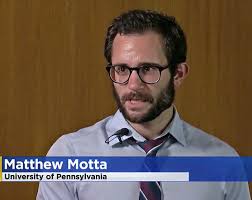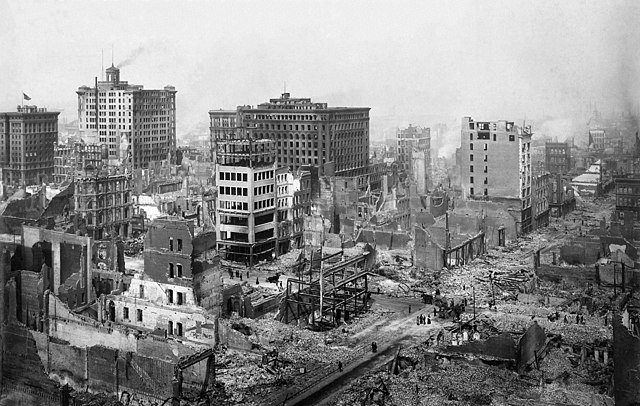Americans Focus On Responding To Earthquake Damage, Not Preventing It, Because They Are Unaware Of Their Risk
 Matt MottaOn July 4 and 5, two major earthquakes, followed by several thousand smaller ones, struck Southern California. Their size and the damage they caused captured attention around the country. What tends to get much less notice from the public is what can be done to prevent catastrophic damage from big quakes.
Matt MottaOn July 4 and 5, two major earthquakes, followed by several thousand smaller ones, struck Southern California. Their size and the damage they caused captured attention around the country. What tends to get much less notice from the public is what can be done to prevent catastrophic damage from big quakes.
Had the epicenter of these latest large California earthquakes been closer to downtown Los Angeles, tens of thousands of apartment buildings could have been damaged or collapsed. Consequently, structural engineers are calling on legislators to prepare for and prevent earthquake damage by crafting new and improved building codes. Restricting where developers can put up new skyscrapers, or requiring that new residential buildings be designed to withstand high-magnitude earthquakes, could ultimately save structures and lives.
For the most part, though, there’s just not that much general demand for preventative policies. Why?
Might low awareness about earthquake risks help explain why the public doesn’t demand policies aimed at mitigating the loss of life and property in the event of a major earthquake? Andrew Rohrman, a civil engineer, and I, a political scientist, teamed up to investigate this question.
Politicians give people what they want
For an example of inconsistent and inadequate earthquake preparedness regulations, look at San Francisco. While the city has strict laws on the books to prevent damage to hospitals and schools, regulations regarding its 160 skyscrapers are significantly more lax. A 50-story tower in downtown San Francisco has the same building strength requirements as a structure with only five stories.
Although scientists can’t precisely predict when and where earthquakes will strike, a 2014 U.S. Geological Survey report suggested there’s a 72% chance that an earthquake of 6.7 magnitude or greater will hit the Bay Area within the next 25 years. If the epicenter of an earthquake of that size strikes close to downtown San Francisco, as was the case in the city’s catastrophic 1906 earthquake, liquefaction – that is, the destabilization of soil – could threaten the structural integrity of dozens of large buildings.
Why are San Francisco’s disaster prevention policies so weak? The answer could be due to low public demand. Policymakers have an electoral incentive to institute changes that are important to the public since voters can get rid of politicians who don’t respond to their policy preferences. Absent that demand, legislators may avoid pursuing this type of action as other issues take precedence.
Researchers have found that Americans don’t prioritize local policies aimed at earthquake disaster prevention. That holds true even for those living in areas where earthquakes are relatively common. Although there is some evidence that Americans reward politicians who allocate funds to respond to natural disasters after they occur, there’s just not much support for policies to prevent damage and loss of life in the first place.
So, why isn’t the public demanding more from their policymakers to mitigate the risks posed by major earthquakes? Our research set out to answer this question.
Recognizing real risks increases policy support
The low demand for preventative policies in the U.S. could stem from the fact that many Americans, even those who regularly experience earthquakes, inaccurately assess the likelihood that they’ll experience a big one.
For example, surveys of Southern California residents suggest that people incorrectly perceive themselves as being at fairly modest risk of experiencing a major earthquake. Others have documented high levels of public misinformation about earthquake risks and predictability – such as the idea that odd animal behavior can signal an impending earthquake.
 San Francisco Earthquake of 1906. Ruins in vicinity of Post and Grant Avenue. Looking northeast. Public DomainTo study how risk perceptions might shape public policy support, we surveyed 855 Americans who reside in California, Oregon, Washington, Alaska or Hawaii.
San Francisco Earthquake of 1906. Ruins in vicinity of Post and Grant Avenue. Looking northeast. Public DomainTo study how risk perceptions might shape public policy support, we surveyed 855 Americans who reside in California, Oregon, Washington, Alaska or Hawaii.
We asked people to tell us what they thought the probability was, on a 0 to 100 scale, that a “major earthquake causing catastrophic damage” will occur where they live within the next 20 years. This was their perceived earthquake risk score.
Then we looked at a measure developed by seismologists to determine the objective probability of a major earthquake – known as “peak ground acceleration” – based on the zip code of each respondent. That way we could compare their perceived probability with the actual risk.
Additionally, we asked respondents how much they support or oppose implementing stricter building code requirements, investing in public awareness campaigns about earthquake preparedness and restricting where private developers can build large buildings. These responses on a seven-point scale, from 1 (strongly oppose) to 7 (strongly support), gave us a measure of support for preventative public policy.
We found only a modest relationship between objective earthquake risk (peak ground acceleration) and perceptions of earthquake risk. Although people who live in highly at-risk zip codes tend to feel more at risk than people living in less at-risk areas, it wasn’t by much. Alarmingly, we found that people living in some of the most at-risk zip codes in the country, like those in and surrounding the Bay Area, perceived their risk as being virtually the same as those living in areas where large earthquakes are highly unlikely, as in northeastern Oregon and Washington.
Critically, though, people who live in highly at-risk areas, and who accurately recognize that they are at risk, express significantly higher levels of policy support than people who live in at-risk areas and inaccurately assess their risk. These individuals also tend to express significantly higher levels of support than people who live in comparatively lower risk areas.
A job for improved science communication
Our research has important implications for public policy. By showing that people who recognize they live in at-risk areas are, in fact, more supportive of policy efforts to mitigate earthquake damages, we think the public certainly has the potential to push lawmakers toward preventative policy action.
Unfortunately, our research suggests that many Americans living in at-risk areas may hold risk perceptions that are not in line with reality. This finding underscores how important it is for local governments and science communicators to try to communicate earthquake risks to people living in hazardous areas.
Scientists and engineers know how to build cities in ways that would minimize the damage from a major quake. But for the public to demand policies that would help preempt, rather than simply respond to, seismic disasters, they need a clear understanding of the risk they face.
Matt Motta, Assistant Professor of Political Science, Oklahoma State University
This article is republished from The Conversation under a Creative Commons license. Read the original article.
- Tags:
- 1906 San Francisco earthquake
- Andrew Rohrman
- building codes
- California earthquakes
- catastrophic earthquake damage
- Disaster Preparedness
- disaster prevention policies
- disaster response
- downtown Los Angeles
- earthquake disaster prevention
- earthquake predictability
- earthquake preparedness
- earthquake preparedness regulations
- earthquake risks
- earthquakes
- Emergency Preparedness and Response (EPR)
- liquefaction
- Matt Motta
- natural disasters
- Oklahoma State University
- peak ground acceleration
- public awareness campaigns
- San Francisco
- soil destabilization
- Southern California
- stricter building code requirements
- structural engineers
- structural integrity of large buildings
- US Geological Survey
- Login to post comments